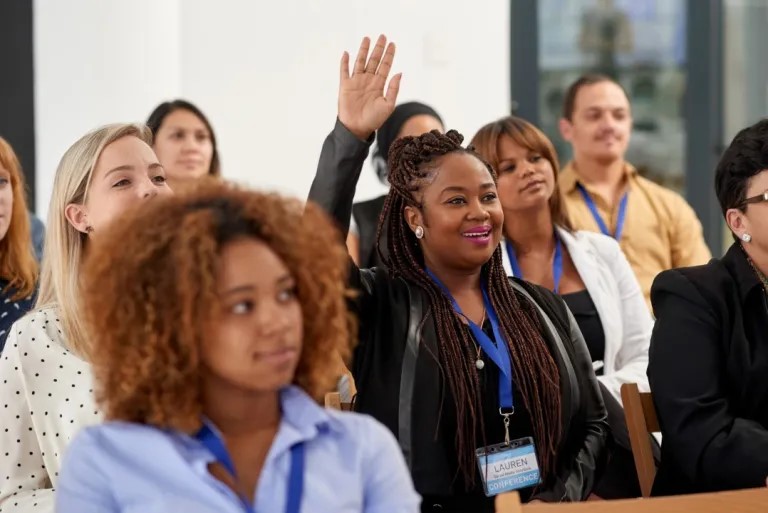A message of hope: If these competitors can overcome their differences to grow women’s equality, then so much more progress is possible

Let’s be honest: It’s been a difficult few years to keep hope alive. It can feel like we’re so divided as a people that true progress may just be impossible. Well, I’m here to share a story that I think will give you hope. Because that’s what it’s done for me. It’s a story about fierce competitors in a billion-dollar industry overcoming what separates them. It’s about coming together around a shared commitment to increase women’s equality — and succeeding.
Imagine this: A small group of high-level executives from an array of healthcare companies — competitors — are sitting in a room having a very honest conversation about the barriers facing women of color inside their organizations. I’m facilitating. A man, someone who is very senior inside of his organization, tells the rest of the group that he just doesn’t understand the need to focus specifically on advancing women of color into leadership roles. “Aren’t we for all women?”, he asks. A female executive in the room jumps in. She asks if he’s looked at the data, including McKinsey’s Women in the Workplace report, which clearly lays out how some groups of women are progressing faster than others, and some not at all. “You can’t solve everything for all women all at once,” she says, “so let’s start with targeting the women whose lack of equity is most glaring.”
When she starts talking, she’s a bit defensive, but the dynamics in the room are such that her defensiveness quickly comes down, and so does his, and they are able to talk and share. By the end of the conversation, he says, “This is why I keep coming to these sessions. I’m going to take this back to my senior leadership.” And he does. And his company takes action — significant action — including beginning to track the demographics of their workforce in ways that acknowledge the intersectionality of people’s identities, beyond a simple male/female dichotomy.
The session I’m describing happened as part of HBA’s Gender Parity Collaborative, which brings together high-level executives (C-suite and SVP-level) from an array of healthcare companies who are holding each other accountable for increasing parity and equity for women, and for accelerating more women — especially those in traditionally underestimated groups (thank you, Ruchika Tulshyan, for introducing me to this term) — into positions of influence. If you know me, you know I’ve been with the HBA for a long time now, and I was there a few years ago when our leadership realized that to drive true systemic change in our industry, it was time to complement our decades-long track record of developing individual women leaders with company-level commitment to change.
I know that all sounds good, but what I want to emphasize is that the senior executives who represent these companies within the Collaborative are really doing the work. As the story above illustrates, they are willing to admit what they don’t know and learn from each other. And then they are using the influence they have within their organizations to do the difficult but essential work on strategy and culture change that drives true progress.
Here are just a couple of additional outcomes we’ve seen:
- More women of color in management: The HBA Collaborative has more women of color at all levels of management compared to the all-industries
average in corporate America — from manager-level all the way to the C-suite. From 2018 to 2020, the HBA Collaborative cohort increased senior-level women of color representation in its U.S. offices by an average of 39 percent. - More senior-level women overall: From 2018-2020, companies who are members in the Gender Parity Collaborative saw a 27 percent average increase in women’s representation at the VP level and higher, compared to the broader industry, which experienced an average decline in representation of nine percent.
I am proud of the HBA for seeing the need for the Gender Parity Collaborative, and even prouder of the Collaborative members whose commitment to walking the talk has made their collective effort as impactful as it’s been. Their success, and their continued commitment to acknowledging what they don’t know, learning, and changing, together, gives me hope that real change is possible when it comes to driving equity in other sectors, and in our culture more generally.
####
Authored by Nikki Jones, Chief People and DE&I Officer for the Healthcare Businesswomen’s Association.
Nikki Jones is a people and culture leader with over 25+ years of professional experience. As the DE&I lead, she is focused on ensuring diversity, equity and inclusion are infused into every area of business operations – from how we interact with and meet the needs of our members to how we show up as a DE&I champion, leader and change-maker in the healthcare industry.